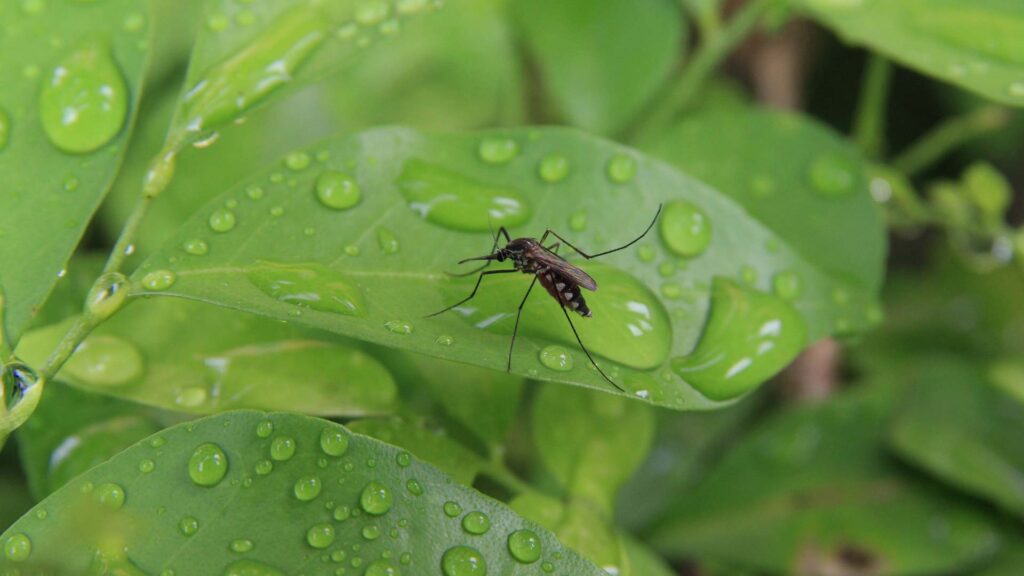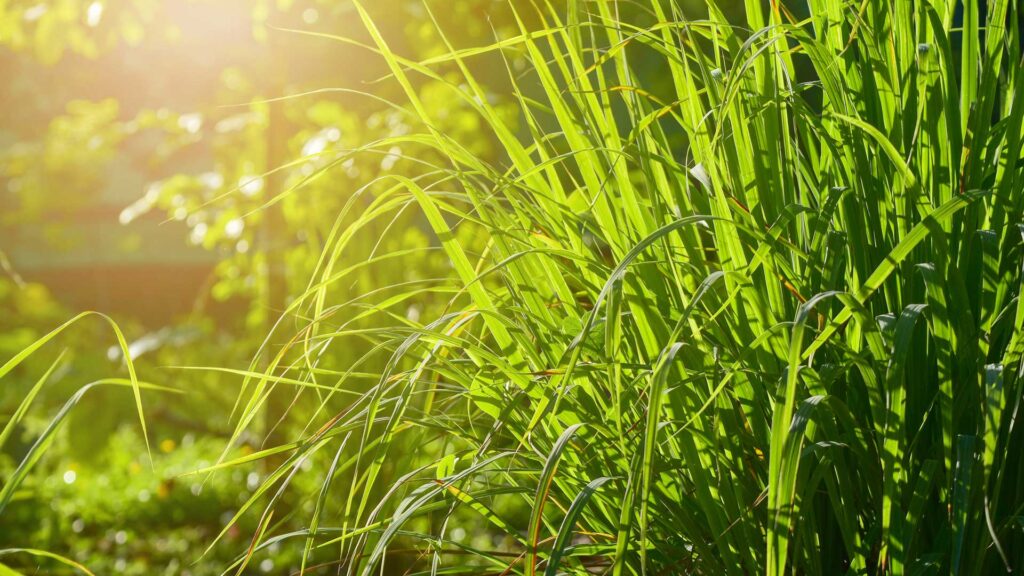Do dragonflies eat mosquitoes?
Dragonflies are nature’s efficient predators of mosquitoes. A single dragonfly can consume hundreds of mosquitoes daily, significantly impacting mosquito populations. Their larvae, living in water, prey on mosquito larvae, while adult dragonflies hunt adult mosquitoes in the air. Attracting dragonflies to your yard, such as by maintaining a water feature and avoiding pesticides, can be an effective, natural method for mosquito conol, contributing to a healthier and more enjoyable outdoor environment.

- The Dragonfly: Aerial Acrobats in Mosquito Control
- A Natural Solution: Embracing Dragonflies in Mosquito Management
- Attracting Dragonflies to Your Yard: A Natural Approach to Mosquito Control
- The Lifecycle of a Dragonfly
- The Bigger Picture: Dragonflies as Environmental Sentinels
- Embracing Nature’s Balance: The Role of Dragonflies in Ecosystem Health
- Frequently Asked Questions Dragonflies and Mosquitoes
In the perennial battle against mosquitoes, homeowners often find themselves navigating a maze of chemical repellents, electronic devices, and various home remedies. Yet, amidst these modern solutions lies an ancient and remarkably efficient natural predator, often overlooked but immensely effective: the dragonfly. These winged wonders, with their dazzling colors and acrobatic flights, are not just a delightful spectacle in our gardens and near water bodies; they are also one of nature’s most proficient hunters of mosquitoes.
Dragonflies have graced our planet for millions of years, predating even the dinosaurs. Their evolutionary success is partly due to their extraordinary hunting abilities. Equipped with exceptional vision and swift, agile flight, dragonflies are adept at capturing prey mid-air, and mosquitoes are among their favored targets. This makes them a crucial component in the natural control of mosquito populations, a fact that is often overshadowed by more visible, human-made interventions.
The significance of dragonflies in managing mosquitoes extends beyond their adult hunting prowess. Their life cycle begins in water, where female dragonflies lay their eggs. The emerging nymphs, which live underwater, are as voracious as their airborne counterparts, feeding on mosquito larvae. This dual role, both in water and in the air, positions dragonflies as a formidable natural barrier against mosquito proliferation.
The relevance of dragonflies in our ecosystems transcends mere mosquito control. In regions plagued by mosquito-borne diseases like malaria, dengue, and Zika virus, dragonflies act as an unheralded line of defense. By naturally keeping mosquito populations in check, they play a subtle yet vital role in reducing the spread of these diseases, contributing to public health in a way that often goes unrecognized.
As awareness of environmental sustainability grows, the role of dragonflies in natural pest control gains more attention. Homeowners and community planners are increasingly looking towards eco-friendly solutions for pest control, and dragonflies offer just that. By understanding and promoting the habitat needs of these insects, we can harness their natural predation to manage mosquito populations effectively, reducing our reliance on chemical methods.
The dragonfly, with its ancient lineage and remarkable hunting skills, is more than just an enchanting presence by our ponds and gardens. It is a key ally in our ongoing struggle against mosquitoes, offering a natural, sustainable solution to a problem that affects homes and communities worldwide. As we continue to seek balance with nature, the dragonfly’s role in our ecosystems serves as a reminder of the intricate connections that sustain our natural world.
The Dragonfly: Aerial Acrobats in Mosquito Control
Dragonflies, often seen skimming over ponds and meadows, are more than just a captivating sight. These winged wonders are nature’s own answer to mosquito control, playing a crucial role in keeping mosquito populations in check. Their presence in an ecosystem is not just beneficial but essential for natural pest control.
Dragonflies are among the most effective hunters in the insect world. Their aerial abilities are unparalleled: they can hover, fly backward, and even change direction mid-air with astonishing agility. This prowess is not just for display; it’s a critical component of their hunting strategy. Equipped with large multifaceted eyes that provide nearly 360-degree vision, dragonflies can spot their prey—mosquitoes—from several feet away.
Once a dragonfly spots a mosquito, it employs its exceptional flying skills to intercept it. Dragonflies can calculate the trajectory of their moving prey, adjusting their flight path to intersect with the mosquito. This hunting method is incredibly efficient, allowing dragonflies to capture mosquitoes with a success rate that astonishes entomologists.
The impact of dragonflies on mosquito populations is significant. Studies have shown that dragonflies can consume large quantities of mosquitoes daily. In their nymph stage, when they live in water, they feed on mosquito larvae, effectively reducing the number of mosquitoes that reach adulthood. This dual-stage predation—both in water and air—makes dragonflies uniquely effective in controlling mosquito populations.
Dragonflies do more than just reduce the nuisance of mosquitoes. By controlling mosquito populations, they help in reducing the spread of mosquito-borne diseases, which can be a significant public health concern. Their role in the ecosystem is a perfect example of natural pest control, where the balance of predator and prey maintains ecological harmony.
Dragonflies are not just aerial acrobats; they are vital players in the natural control of mosquitoes. Their presence in an ecosystem is a testament to nature’s intricate balance, where each species plays a critical role. As we seek sustainable solutions to pest control, the dragonfly stands as a symbol of nature’s ingenuity and efficiency.
A Natural Solution: Embracing Dragonflies in Mosquito Management
In the ongoing battle against mosquitoes, dragonflies emerge as a natural and effective solution. These winged predators, often overlooked, play a crucial role in controlling mosquito populations, offering an eco-friendly alternative to chemical repellents.
Dragonflies are among nature’s most efficient hunters. Their aerial agility allows them to catch mosquitoes in flight with remarkable precision. Adult dragonflies, known for their voracious appetite, can consume a significant number of mosquitoes daily. This appetite extends to their nymph stage, where they hunt mosquito larvae in water bodies, effectively reducing the next generation of mosquitoes.
The presence of dragonflies in an ecosystem goes beyond mere mosquito control. They help maintain the balance of insect populations, ensuring that no single species, like mosquitoes, dominates the environment. This balance is crucial for the health of local ecosystems, as it prevents the overpopulation of any one species, which can lead to various ecological issues.
Dragonflies serve as bioindicators, meaning their presence or absence can reveal the health of an ecosystem. A thriving dragonfly population often indicates a healthy, unpolluted environment, especially in aquatic ecosystems where they breed and their nymphs develop. Conversely, a decline in dragonfly numbers can signal environmental issues, such as water pollution or habitat destruction.
Homeowners can attract dragonflies by creating a welcoming habitat. This includes having a water feature, such as a pond or a fountain, which is essential for their breeding. Planting native vegetation around these water bodies provides resting and hiding spots for dragonflies. It’s also important to maintain a pesticide-free environment, as chemicals can harm dragonflies and other beneficial insects.
Creating a dragonfly-friendly environment offers multiple benefits. It reduces the reliance on chemical mosquito repellents, which can have adverse environmental and health effects. It also enhances the biodiversity of the area, contributing to a more balanced and healthy ecosystem. For homeowners, this means enjoying outdoor spaces with fewer mosquitoes and a greater appreciation of the natural world.
Embracing dragonflies as a natural solution for mosquito control is a step towards sustainable living. By understanding and supporting these ancient predators, we not only reduce mosquito populations but also contribute to the health and balance of our local ecosystems. Dragonflies, with their dual role as predators and bioindicators, remind us of the intricate connections within nature and the importance of preserving these delicate balances.
Attracting Dragonflies for Natural Mosquito Control
| Strategy | Description | Benefits | Considerations |
|---|---|---|---|
| Water Features | Install ponds, fountains, or birdbaths to provide breeding grounds for dragonflies. | Creates a habitat for dragonflies to lay eggs and for nymphs to develop. | Ensure regular maintenance to prevent the water from becoming stagnant, which could attract mosquitoes instead. |
| Native Vegetation | Plant native flowers and shrubs around water features. | Provides resting and hiding spots for adult dragonflies. | Choose plants that thrive in your local climate and require minimal upkeep. |
| No Pesticide Use | Avoid using chemical pesticides in your yard. | Protects dragonflies and other beneficial insects from harm. | Consider natural pest control methods to maintain a healthy ecosystem. |
| Shallow Water Areas | Create shallow areas in ponds. | Ideal for nymphs and emerging adults. | Shallow areas should be sunlit and free of fish that may prey on nymphs. |
| Rocks and Perches | Place flat stones or sticks near water features. | Offers basking and perching spots for dragonflies. | Position these in sunny spots where dragonflies can warm themselves. |
| Diverse Plant Life | Include a variety of plants, both aquatic and terrestrial. | Attracts a wider range of dragonfly species and provides diverse habitats. | Research which plants are most attractive to dragonflies in your region. |
| Avoid Mosquito Larvicides | Refrain from using larvicides in water bodies. | Prevents harm to dragonfly nymphs which feed on mosquito larvae. | Regularly clean and maintain water bodies to naturally control mosquito populations. |
Attracting Dragonflies to Your Yard: A Natural Approach to Mosquito Control
Creating a dragonfly-friendly habitat in your yard is not just about enhancing its aesthetic appeal; it’s a strategic step towards natural mosquito control. Dragonflies are efficient predators of mosquitoes, and encouraging their presence can significantly reduce the mosquito population in your area. Here’s how you can attract these beneficial insects to your yard:
Water Features: The Foundation of Dragonfly Habitats
Dragonflies are inextricably linked to water, as their larvae (nymphs) are aquatic. To attract them, consider installing a pond or a water garden. The ideal pond for dragonflies is about two feet deep with shallow edges, as dragonflies prefer to lay their eggs in still, non-flowing water. If space is a constraint, even a small water feature or a rain garden can be effective.
Plant Diversity: Creating a Dragonfly Haven
Vegetation is crucial for providing dragonflies with resting, hiding, and hunting grounds. Plant a mix of submerged, floating, and marginal plants in and around your water feature. Submerged plants like eelgrass offer a habitat for nymphs, while floating plants like water lilies provide landing spots for adult dragonflies. Marginal plants, such as rushes and irises, are excellent for egg-laying.
Chemical-Free Environment: Ensuring a Safe Habitat
Pesticides and insecticides can be detrimental to dragonflies and their larvae. To maintain a dragonfly-friendly yard, minimize or eliminate the use of chemicals. Embrace organic gardening practices and consider natural pest control methods to keep the ecosystem in your yard balanced and safe for dragonflies.
Providing Perching Spots
Adult dragonflies often perch on tall grasses, sticks, or stones to scout for prey and mates. Incorporating these elements around your pond or water feature can make your yard more inviting for them. Bamboo stakes, reeds, or even decorative sculptures can serve as excellent perching spots.
Encouraging Natural Predators
Maintaining a balanced ecosystem is key. Encourage the presence of natural dragonfly predators like birds and frogs, as they help in keeping the dragonfly population in check, ensuring that no single species dominates the ecological balance in your yard.
Avoiding Mosquito Larvicide in Water Bodies
While it might be tempting to use larvicides to control mosquitoes in your pond, these can harm dragonfly nymphs. Dragonfly larvae are natural predators of mosquito larvae, so allowing them to thrive can naturally keep the mosquito population down.
Patience and Observation
Attracting dragonflies is a process that requires patience. It might take a season or two for dragonflies to discover and establish themselves in your yard. Regularly observe your yard and water feature to understand what works best in your specific environment.
By creating a welcoming habitat for dragonflies, you not only enhance the natural beauty of your yard but also contribute to a sustainable way of controlling mosquitoes. This approach aligns with the broader goal of ecological balance and biodiversity conservation, making your garden a small but significant part of a larger environmental solution.
The Lifecycle of a Dragonfly
The lifecycle of a dragonfly is a fascinating journey, marked by distinct stages and remarkable transformations. This journey begins with the female dragonfly depositing her eggs in or near water bodies, such as ponds, marshes, or slow-moving streams. The choice of the laying site is crucial, as it ensures the survival of the nymphs, which are entirely aquatic. These eggs hatch into nymphs, creatures vastly different from their adult counterparts. Dragonfly nymphs are voracious predators, equipped with extendable jaws that they use to capture a variety of aquatic prey, including mosquito larvae. This predatory behavior in their larval stage plays a crucial role in controlling mosquito populations in aquatic environments.
As nymphs grow, they undergo a series of molts, shedding their exoskeleton multiple times. This process, known as incomplete metamorphosis, can last anywhere from a few months to several years, depending on the species and environmental conditions. During this time, the nymphs continue to be formidable predators, contributing significantly to the aquatic food chain. The final stage of their metamorphosis is perhaps the most dramatic. The nymph climbs out of the water onto a plant or other suitable surface and begins the transition to its adult form. This involves shedding its larval skin to reveal the adult dragonfly, a process that can take several hours. The newly emerged adult, known as a teneral, is soft and vulnerable, requiring time for its exoskeleton to harden and its wings to dry and strengthen. Once this transformation is complete, the dragonfly takes to the air, beginning its life as an agile, airborne predator.
In their adult stage, dragonflies continue their predatory role, now hunting airborne insects, with mosquitoes being a common target. Their exceptional flying abilities – including hovering, rapid acceleration, and even backward flight – make them adept at capturing their prey in mid-air. The adult stage of a dragonfly, while spectacular, is relatively short-lived, lasting just a few weeks to a few months. During this time, their focus shifts to mating and laying eggs, thus completing their lifecycle and ensuring the continuation of their species. This lifecycle, with its distinct stages and ecological roles, highlights the dragonfly’s importance in both aquatic and terrestrial ecosystems, particularly in natural pest control.
Dragonflies have been around for over 300 million years, making them one of the oldest insect species.
The Bigger Picture: Dragonflies as Environmental Sentinels
Dragonflies, often seen skimming over ponds and meadows, are more than just mosquito predators; they are vital indicators of ecological health. Their presence in an ecosystem reflects the quality of both terrestrial and aquatic habitats. Dragonflies require clean, unpolluted water for their nymphs, making them sensitive to changes in water quality. A diverse and abundant dragonfly population often signifies a healthy, unpolluted water body. Conversely, a decline in dragonfly numbers can signal environmental degradation, prompting ecologists to investigate potential causes such as water pollution or habitat loss.
The Role of Dragonflies in the Ecosystem
- Mosquito Control: Dragonflies consume large numbers of mosquitoes, aiding in pest control.
- Biodiversity Indicators: A healthy dragonfly population signifies a balanced ecosystem.
- Pollination Assistants: While not as prolific as bees, dragonflies contribute to pollinating plants.
The role of dragonflies extends beyond indicating environmental health. They are a crucial part of the food web, serving as prey for birds, fish, and other wildlife. This interdependence highlights the importance of biodiversity and the need for balanced ecosystems. Protecting dragonflies and their habitats contributes to the overall health of our environment, supporting a wide range of species and maintaining the natural cycles that are essential for life. As we strive for sustainable living and conservation, understanding and preserving the habitats of dragonflies becomes a key aspect of environmental stewardship.
Embracing Nature’s Balance: The Role of Dragonflies in Ecosystem Health
Our exploration into the role of dragonflies in controlling mosquito populations brings us to a broader, more profound understanding of our relationship with nature. Dragonflies, these ancient aerial predators, are not just tools for mosquito management; they are vital components of a complex ecological tapestry.
Dragonflies, through their lifecycle and predatory habits, contribute significantly to the health of both terrestrial and aquatic ecosystems. As nymphs, they help maintain the balance in aquatic environments by feeding on mosquito larvae and other small aquatic organisms. As adults, their predation on adult mosquitoes and other flying insects helps control these populations, which can have direct benefits for human health and comfort.
Their role extends beyond just controlling pests. Dragonflies are also pollinators, albeit less known than bees or butterflies. By visiting flowers for nectar, they contribute to the pollination process, albeit indirectly, thus playing a part in maintaining the biodiversity of plant life.
Dragonflies are excellent bioindicators, meaning their presence or absence can reveal a lot about the health of an environment. A diverse and abundant dragonfly population usually indicates a healthy, unpolluted water body and a balanced ecosystem. Conversely, a decline in dragonfly numbers can signal environmental issues, such as water pollution or habitat destruction.
The reduction of mosquito populations by dragonflies has direct implications for human health. Mosquitoes are vectors for numerous diseases, such as malaria, dengue fever, and Zika virus. By naturally controlling these populations, dragonflies help in reducing the risk of these diseases.
Moreover, the presence of dragonflies allows homeowners and communities to reduce their reliance on chemical insecticides, which can have harmful side effects on both human health and the environment. This natural pest control aligns with the growing desire for sustainable living practices.
Encouraging dragonfly populations goes hand in hand with environmental stewardship. Homeowners can play a role by creating dragonfly-friendly habitats, such as ponds or wetlands, and by practicing organic gardening methods that avoid harmful chemicals. Communities can contribute by protecting wetlands, reducing pollution, and supporting conservation efforts.
Dragonflies are more than just mosquito predators; they are symbols of ecological balance and indicators of environmental health. Their presence in our gardens and communities reminds us of the intricate connections within nature and the importance of living in harmony with our environment. By understanding and supporting these remarkable insects, we not only enhance our own quality of life but also contribute to the broader health of the planet. This coexistence is a testament to the beauty and resilience of nature, and a reminder of our responsibility to protect and cherish it.
Frequently Asked Questions Dragonflies and Mosquitoes
Can dragonflies really help control mosquitoes?
Yes, dragonflies are effective in controlling mosquitoes. Both their nymphs and adults prey on mosquitoes, significantly reducing their numbers.
How many mosquitoes can a dragonfly eat in a day?
A single dragonfly can eat dozens to hundreds of mosquitoes in one day, making them a formidable force in mosquito control.
How do dragonflies hunt mosquitoes?
Dragonfly nymphs hunt mosquito larvae in water, while adult dragonflies catch adult mosquitoes in mid-air with their agile flying skills.
Can I attract dragonflies to my yard to control mosquitoes?
Yes, you can attract dragonflies by creating a dragonfly-friendly habitat, such as having a water feature and native plants in your yard, and avoiding the use of pesticides.
Are dragonflies harmful to humans or pets?
No, dragonflies are not harmful to humans or pets. They are focused predators of insects like mosquitoes and do not pose a threat to larger animals.
Do dragonflies play a role in the ecosystem beyond mosquito control?
Yes, dragonflies are important indicators of environmental health, especially in aquatic ecosystems. Their presence or absence can signal the ecological balance of their habitat.




